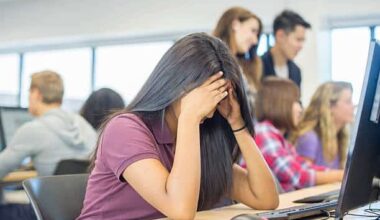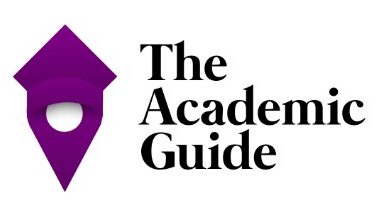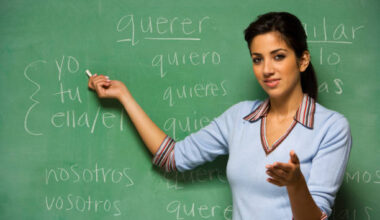Table of Contents
1.1. Picture books for younger children
The use of picture books is an excellent way to introduce younger children to the life and achievements of Martin Luther King, Jr. These books provide engaging visual representations that can capture the attention and imagination of young readers. Some recommended picture books for teaching kids about Martin Luther King, Jr. include “Martin’s Big Words” by Doreen Rappaport and Bryan Collier, which uses powerful illustrations and quotes to convey key messages. “I Have a Dream” by Dr. Martin Luther King, Jr. himself is also available as a picture book, allowing children to read and understand his iconic speech. Another great choice is “The Story of Martin Luther King Jr.” by Christine Platt, which presents his life story in a simple and accessible format. These picture books not only educate children about the importance of equality and civil rights but also inspire them to dream big and make a positive impact on the world.
1.2. Chapter books for older children
A great way to engage older children in learning about Martin Luther King, Jr. is through chapter books that delve deeper into his life and accomplishments. These books provide a more detailed narrative and allow readers to explore various aspects of King’s journey. One highly recommended chapter book is “Martin Rising: Requiem for a King” by Andrea Davis Pinkney, which chronicles the last months of King’s life through poetry. Another excellent choice is “Who Was Martin Luther King, Jr.?” by Bonnie Bader, part of the popular “Who Was?” biography series. This book provides a comprehensive overview of King’s life, from his childhood to his influential leadership in the civil rights movement. For a fictionalized account inspired by true events, “The Watsons Go to Birmingham” by Christopher Paul Curtis explores the experiences of an African American family during the time of King’s Birmingham campaign. These chapter books not only shed light on King’s legacy but also foster empathy, understanding, and critical thinking skills in older children.
1.3. Biographies for in-depth understanding
Biographies are excellent resources for providing students with an in-depth understanding of the life and legacy of Martin Luther King, Jr. These books offer a comprehensive look into his struggles, accomplishments, and the impact he had on the civil rights movement. One highly recommended biography is “Martin’s Big Words: The Life of Dr. Martin Luther King, Jr.” by Doreen Rappaport. This book combines powerful illustrations with excerpts from Dr. King’s speeches, allowing children to connect with his message. Another insightful biography is “Who Was Martin Luther King, Jr.?” by Bonnie Bader, which provides a detailed account of his life from childhood to his influential leadership. Additionally, “Martin Luther King, Jr.: A Photographic Story of a Life” by Amy Pastan offers a visually engaging experience with its collection of photographs documenting important moments in Dr. King’s life. These biographies not only educate children about Martin Luther King, Jr.’s impact but also inspire them to embrace the values of equality, justice, and peaceful activism.
2. Educational websites and online platforms
When it comes to teaching kids about Martin Luther King, Jr., there are several educational websites and online platforms that offer valuable resources. One such website is The Martin Luther King, Jr. Research and Education Institute, which provides a vast collection of primary sources, including speeches, writings, and historical documents related to King’s life and legacy. Another useful platform is Scholastic, which offers interactive lessons and activities that engage students in learning about civil rights and King’s important contributions. Additionally, the National Civil Rights Museum’s website offers an array of educational materials, articles, and exhibits that provide insight into the civil rights movement and its key figures, including Martin Luther King, Jr.
2.1. Interactive games and quizzes
To make learning about Martin Luther King, Jr. more enjoyable and interactive for kids, there are various games and quizzes available. One popular game is “March on Washington: A Virtual Reality experience,” which allows students to virtually participate in the iconic 1963 March on Washington where King delivered his famous “I Have a Dream” speech. Another engaging option is the “Martin’s Big Words” interactive quiz, based on the book by Doreen Rappaport, which challenges students to test their knowledge about King’s life and his powerful words. These interactive activities provide a fun and immersive way for children to learn about the life and impact of Martin Luther King, Jr.
2.2. Engaging videos and documentaries
Watching videos and documentaries can be a powerful tool for teaching kids about Martin Luther King, Jr. There are numerous engaging options available. The “Martin Luther King Jr. Biography for Kids” video provides a concise and informative overview of King’s life and accomplishments, presented in a child-friendly format. Another impactful documentary is “Eyes on the Prize,” a comprehensive series that explores the civil rights movement and features significant moments involving King. Additionally, younger children can enjoy animated videos like “A Kid Explains History: Martin Luther King Jr.” These videos and documentaries bring King’s story to life and help children develop a deeper understanding of his role in the fight for equality.
2.3. Printable worksheets and activities
Printable worksheets and activities offer a hands-on approach to teaching kids about Martin Luther King, Jr. Many websites provide downloadable resources that can be used in classrooms or at home. For example, Education.com offers a variety of printable worksheets that cover topics such as King’s biography, the civil rights movement, and his famous speeches. These worksheets include comprehension questions, vocabulary exercises, and writing prompts to engage students in critical thinking and reflection. In addition, coloring pages featuring key moments in King’s life, such as the Montgomery Bus Boycott or the Selma to Montgomery March, provide a creative outlet for children to express their understanding and appreciation of his historical contributions.
2.4. Lesson plans and teaching guides
For educators seeking comprehensive lesson plans and teaching guides to effectively teach kids about Martin Luther King, Jr., several resources are available. The organization Teaching Tolerance offers a range of lesson plans designed for different grade levels, which explore King’s life, the civil rights movement, and the importance of equal rights. These plans include activities, discussion questions, and multimedia resources to engage students in meaningful learning experiences. Another valuable resource is the Martin Luther King, Jr. Day of Service website, which provides themed lesson plans focused on community service and social justice. These lesson plans offer innovative approaches to inspire students and empower them to make a positive impact, honoring King’s legacy.
3. Multimedia resources
Multimedia resources are excellent tools for teaching children about Martin Luther King, Jr. One impactful way to engage students is by exploring Martin Luther King, Jr.’s speeches and audio recordings. By listening to his powerful words, children can gain a deeper understanding of his inspiring message of equality and justice. Additionally, documentaries and films about the civil rights movement provide valuable insights into the historical context, events, and individuals who played significant roles during that time. These films not only educate but also help students connect emotionally to the struggles faced by African Americans and appreciate the importance of Martin Luther King, Jr.’s work. Virtual museum tours and exhibits allow children to explore artifacts and learn about the civil rights movement in an interactive and immersive way, providing a unique educational experience. Such multimedia resources ensure that the legacy of Martin Luther King, Jr. is preserved and passed on to future generations.
3.1. Martin Luther King, Jr. speeches and audio recordings
Martin Luther King, Jr.’s speeches and audio recordings are invaluable resources for teaching kids about the civil rights leader’s life and legacy. By listening to his iconic speeches, such as the “I Have a Dream” speech delivered during the historic March on Washington, children can witness firsthand the power of Martin Luther King, Jr.’s words, his passion for justice, and his commitment to nonviolent activism. Audio recordings also offer students the opportunity to hear personal anecdotes and interviews, providing deeper insights into his experiences and motivations. These resources allow children to connect with Martin Luther King, Jr.’s vision and understand the significance of his contributions to the fight for equality.
3.2. Documentaries and films about civil rights movement
Documentaries and films about the civil rights movement serve as compelling educational tools for teaching kids about Martin Luther King, Jr. and the broader struggle for civil rights. These visual resources bring history to life, showcasing key events, influential figures, and the challenges faced by African Americans during that era. Films like “Selma” and “Eyes on the Prize” provide historical context and portray the courage and resilience of individuals who fought for equality. By watching these films, children can develop a deeper understanding of the impact of segregation and racial inequality and appreciate the immense strides made towards a more just society. Documentaries and films serve as powerful mediums to inspire students and foster conversations surrounding Martin Luther King, Jr.’s important work.
3.3. Virtual museum tours and exhibits
Virtual museum tours and exhibits offer an innovative way to engage children in learning about Martin Luther King, Jr. and the civil rights movement. These virtual experiences allow students to explore museums and exhibits from the comfort of their own homes or classrooms. Through interactive displays, artifacts, and multimedia presentations, children can gain a comprehensive understanding of the historical context, major milestones, and significant individuals involved in the fight for civil rights. Virtual tours also provide opportunities for students to reflect, ask questions, and deepen their knowledge through interactive quizzes and educational games. By virtually visiting museums dedicated to the civil rights movement, children can develop a sense of empathy and appreciation for the struggles and achievements of African Americans, as well as recognize the lasting impact of Martin Luther King, Jr.’s efforts.
4. Community resources and activities
Community resources are fantastic tools for teaching kids about Martin Luther King, Jr. They provide opportunities for children to engage with their local community and learn about the civil rights leader. Through community resources, children can participate in events and celebrations that commemorate the life and work of Martin Luther King, Jr. They can visit local historical sites and landmarks associated with his legacy, creating a tangible connection to the past. Additionally, kids can get involved in volunteer opportunities, helping to promote equality and justice in their own community.
4.1. Local events and celebrations
Local events and celebrations offer immersive experiences for kids to learn about Martin Luther King, Jr. Communities often organize parades, rallies, and concerts to honor his contributions. Attending these events allows children to witness firsthand the spirit of unity and advocacy that Martin Luther King, Jr. exemplified. They can listen to speakers, watch performances, and interact with others who share a passion for equality. From annual marches to special commemorative ceremonies, local events and celebrations provide a powerful platform for teaching kids about the significance of Martin Luther King, Jr.’s life and achievements.
4.2. Visiting historical sites and landmarks
Visiting historical sites and landmarks associated with Martin Luther King, Jr. provides a tangible connection to his life and the civil rights movement. Kids can explore places such as the Martin Luther King, Jr. National Historic Site in Atlanta or the National Civil Rights Museum in Memphis. These sites often feature exhibits, artifacts, and interactive displays that engage young learners in a profound and personal way. Walking in the footsteps of Martin Luther King, Jr. helps children understand the challenges he faced and the progress that has been made since. It allows them to see history come alive and fosters a deeper appreciation for his enduring legacy.
4.3. Participating in volunteer opportunities
Participating in volunteer opportunities is an excellent way to teach kids about Martin Luther King, Jr.’s message of service and equality. Many organizations and community groups offer volunteer programs that focus on social justice issues. Children can contribute their time and effort to initiatives that support disadvantaged communities, promote equality, or address important causes. Whether it’s volunteering at a local food bank, helping to clean up public spaces, or participating in educational outreach programs, kids can actively contribute to positive social change, embodying the values championed by Martin Luther King, Jr.




